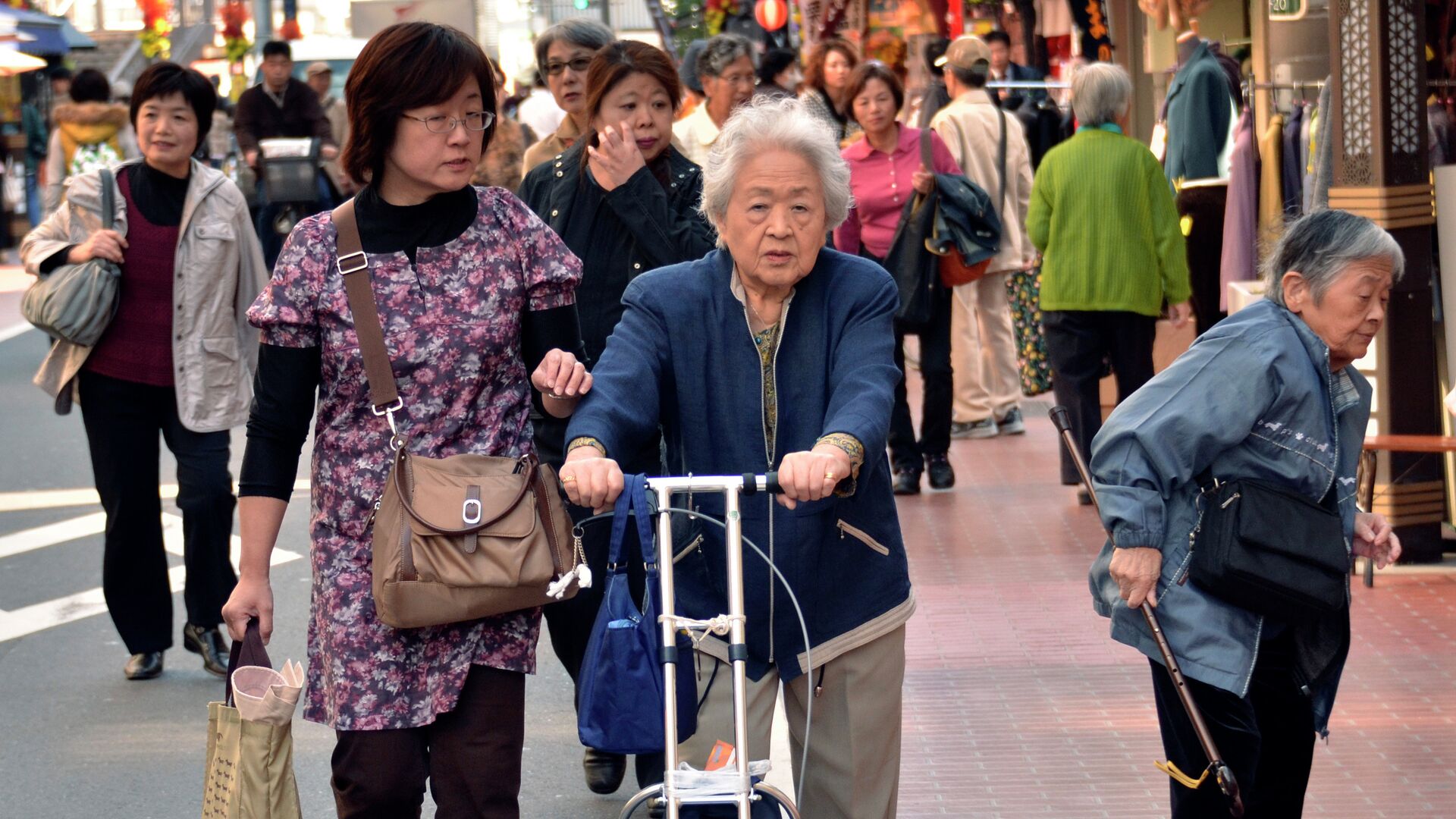https://sputnikglobe.com/20231231/relief-for-aging-societies-how-ai-and-robots-signal-a-brighter-future-for-elderly-care-1115909047.html
Relief for Aging Societies: How AI and Robots Signal a Brighter Future for Elderly Care
Relief for Aging Societies: How AI and Robots Signal a Brighter Future for Elderly Care
Sputnik International
By tapping into AI's advanced features, we can support older individuals in living on their own by helping with daily chores, monitoring health status, and notifying of urgent situations.
2023-12-31T11:12+0000
2023-12-31T11:12+0000
2023-12-31T11:12+0000
world
newsfeed
science & tech
china
japan
financial times
united nations department of economic and social affairs (desa)
baidu
https://cdn1.img.sputnikglobe.com/img/102308/05/1023080507_0:504:3544:2498_1920x0_80_0_0_e14043e213702c0e40cac5b928db331e.jpg
The challenge of Asia's aging population could be solved by incorporating robots and artificial intelligence (AI), experts at Financial Times have predicted.Japan and China grapple with the challenges of aging populations. About one-third of Japan's populace is 65 or above. Meanwhile, a Chinese official report projects its elderly population to surge from 280 million to 400 million by 2035.In the face of that demographic change, AI and machines could solve the workforce gaps in healthcare and elderly care. FT reports that China currently struggles with a deficit of over 10 million health professionals.Leveraging the capabilities of generative AI, healthcare providers can enhance their remote diagnostic services. Market.us estimates that implementing virtual counseling services might save the industry close to $20 billion per year.Chinese tech firm iFlytek, a frontrunner in speech recognition and synthesis, is expanding its horizons by launching robots tailored for the elder care industry. In a new initiative, Baidu, China’s famous search engine giant, focuses on developing tools and applications designed to oversee the health indicators of the aging population.According to forecasts from the United Nations Population Division Department of Economic and Social Affairs (DESA), the demographic shift towards an older population is clear: from 703 million people aged 65 and above to an anticipated 1.5 billion by 2050. By then, one out of every six people globally will be over 65.However, AI-powered systems could enable older adults to live independently by assisting with daily tasks, monitoring health, and alerting them to emergencies. Another study finds that loneliness among the elderly can be addressed with AI-driven programs like "Circle of Friends," while supporting caretaker understanding and stress management.AI could enhance health monitoring for older adults by analyzing wearable device data, detecting signs of disease and offering personalized treatments, with telemedicine platforms improving healthcare access. Also, robotics can provide the aged with physical assistance and emotional support through assistive robots that aid mobility and social robots that offer companionship. AI technologies can aid in geriatric rehabilitation by providing practical assistance and fostering social interactions, potentially reducing nursing staff workload.
https://sputnikglobe.com/20231011/who-says-europes-population-aged-over-65-to-outnumber-youths-under-15-by-2024-1114090804.html
china
japan
Sputnik International
feedback@sputniknews.com
+74956456601
MIA „Rossiya Segodnya“
2023
Chimauchem Nwosu
https://cdn1.img.sputnikglobe.com/img/07e7/09/01/1113046371_0:99:1536:1635_100x100_80_0_0_9c5c627283eca931c39fe4852bbb301c.jpg
Chimauchem Nwosu
https://cdn1.img.sputnikglobe.com/img/07e7/09/01/1113046371_0:99:1536:1635_100x100_80_0_0_9c5c627283eca931c39fe4852bbb301c.jpg
News
en_EN
Sputnik International
feedback@sputniknews.com
+74956456601
MIA „Rossiya Segodnya“
Sputnik International
feedback@sputniknews.com
+74956456601
MIA „Rossiya Segodnya“
Chimauchem Nwosu
https://cdn1.img.sputnikglobe.com/img/07e7/09/01/1113046371_0:99:1536:1635_100x100_80_0_0_9c5c627283eca931c39fe4852bbb301c.jpg
aging population, robots in healthcare, ai-driven programs, telemedicine platforms, elder care industry, health monitoring, wearable device data, geriatric rehabilitation, virtual counseling services, assistive robots
aging population, robots in healthcare, ai-driven programs, telemedicine platforms, elder care industry, health monitoring, wearable device data, geriatric rehabilitation, virtual counseling services, assistive robots
Relief for Aging Societies: How AI and Robots Signal a Brighter Future for Elderly Care
By tapping into AI's advanced features, we can support older individuals in living on their own by helping with daily chores, monitoring health status and alerting public services in an emergency.
The challenge of Asia's aging population could be solved by incorporating robots and artificial intelligence (AI), experts at Financial Times have predicted.
Japan and
China grapple with the challenges of aging populations. About one-third of Japan's populace is 65 or above. Meanwhile, a Chinese official report projects its elderly population to surge from 280 million to 400 million by 2035.
In the face of that demographic change, AI and machines could solve the workforce gaps in healthcare and elderly care. FT reports that China currently struggles with a deficit of over 10 million health professionals.
Leveraging the capabilities of generative AI, healthcare providers can enhance their remote diagnostic services. Market.us estimates that implementing virtual counseling services might save the industry close to $20 billion per year.

11 October 2023, 10:27 GMT
Chinese tech firm iFlytek, a frontrunner in speech recognition and synthesis, is expanding its horizons by launching robots tailored for the elder care industry. In a new initiative, Baidu, China’s famous search engine giant, focuses on developing tools and applications designed to oversee the health indicators of the aging population.
According to forecasts from the United Nations Population Division Department of Economic and Social Affairs (DESA), the demographic shift towards an older population is clear: from 703 million people aged 65 and above to an anticipated 1.5 billion by 2050. By then, one out of every six people globally will be over 65.
However,
AI-powered systems could enable older adults to live independently by assisting with daily tasks, monitoring health, and alerting them to emergencies. Another study finds that loneliness among the elderly can be addressed with AI-driven programs like "Circle of Friends," while supporting caretaker understanding and stress management.
AI could enhance health monitoring for older adults by analyzing wearable device data, detecting signs of disease and offering personalized treatments, with telemedicine platforms improving healthcare access. Also, robotics can provide the aged with physical assistance and emotional support through assistive robots that aid mobility and social robots that offer companionship. AI technologies can aid in geriatric rehabilitation by providing practical assistance and fostering social interactions, potentially reducing nursing staff workload.




